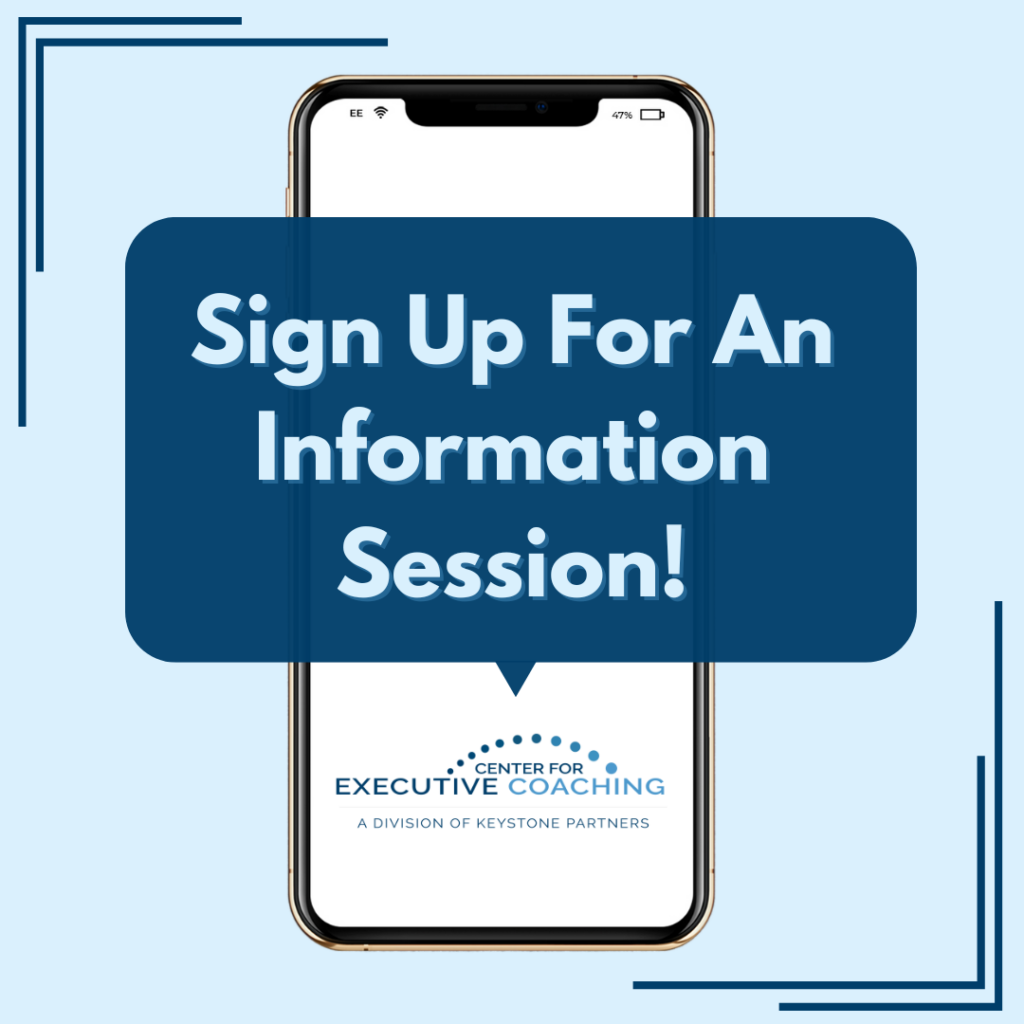
We have trained internal coaching groups at a number of different organizations in the past year. This has given us excellent insights into the pros and cons of different coaching models. Following are some thoughts on using external coaches, managers as coaches, and a dedicated internal coaching group within Human Resources.
First and foremost, and regardless of which model your company chooses, the question of coaching model is secondary to the larger question of how best to develop leaders within an organization. While we are an executive coach training company and therefore biased, we would still be negligent if we didn’t point out these observations:
- People still develop best through experience, e.g., challenging assignments where they learn and find out what they can achieve. The more that organizations can expose their talent to assignments that test and strengthen them, without abandoning them to a sink or swim situation, the more they will develop future leaders.
- People learn second best by being connected to other leaders in their organizations in ways that they can learn from them.
- Interventions like training and coaching are valuable, and still a distant third. Sorry. This fact hurts us as much as it hurts you if you are also in the field of professional development.
Second, regardless of who does the coaching, the process needs leadership to oversee the process of selecting coachees, matching coach and coachees, setting goals, tracking and measuring results of the overall coaching program, integrating the coaching program with other professional development programs, connecting coaches to resolve challenges and sharpen coaching skills, and keep evolving the program.
selecting coachees, matching coach and coachees, setting goals, tracking and measuring results of the overall coaching program, integrating the coaching program with other professional development programs, connecting coaches to resolve challenges and sharpen coaching skills, and keep evolving the program.
With the above caveat out in the clear, here are some observations regarding different coaching models:
External coaches
Pros:
- Senior leadership often prefers them for confidentiality and safety.
- They usually have credentials, training, experience that internal coaches cannot match — even if these advantages are largely perceived and status-driven vs. substantive (e.g., the suit with the brief case from the airport is often perceived to be more valuable than the same suit with the brief case hired from within).
- They bring an objective viewpoint.
Cons:
- They are expensive. Usually only affordable to senior leadership unless the model shifts to group coaching for middle managers.
- They sometimes miss internal dynamics that are obvious to internal coaches (e.g., certain quirks about a senior leader known for being a real jerk).
- Quality and approach can be quite variable.
Considerations:
If human resources drive the process, sometimes they do not scope the engagement in a way that is conducive to what gets maximum results/quality for the senior leader.
Internal coaches
Pros:
- Cost effective.
- Understand the internal dynamics of the organization and key players involved.
- Usually, they have a real passion for coaching.
- They often come from HR and so can easily integrate coaching with other leadership and professional development activities.
Cons:
- Not always seen as credible within the organization.
- Can have multiple roles, which can lead to capacity issues and the need to juggle priorities.
- Because of their other roles, employees might misread coaching as progressive discipline or fixing a problem vs. a privilege and leadership development opportunity.
- Because of their other roles, coaches might think they know more than they really do and be too directive.
- Different coaches might get training from different organizations, leading to very different approaches and confusion within the organization.
Considerations:
- Must communicate the coaching as a privilege and honor; be selective.
- Confidentiality must be strictly enforced, including for performance reviews and in selecting coaches from the same units in large organizations. Otherwise, trust will be destroyed between coach and coachee.
Managers as coaches
(Note: Here we are discussing managers playing the role of coaches to people beyond their own employees vs. knowing how to coach their employees as a management skill when appropriate; we view coaching as a skill that EVERY manager should know how to do as a part of being a good manager and leader!)
Pros:
- They are often seen as more credible and respected than internal coaches from HR.
- They know the ins and outs of the organization and can switch hats from coach to mentor (although this can have its downside in role confusion).
- They have the most direct knowledge about the front lines and how things really happen.
- They can have the most impact on an up-and-coming employee.
Cons:
- They might get too attached to their coachee and advocate too much for their advancement/too politically involved — especially if the coach and coachee come from the same unit or report to each other.
- It might be hard to separate the role of coach vs. mentor vs. manager and wear multiple hats, even if the coachee is not a direct report. The coach-manager has many roles to juggle.
- Sometimes managers have difficulty with the purely non-directive coaching model and feel like they know the answer; some think there is just one answer to challenges and the only way to do it is their way.
Conclusion:
 We have worked with organizations who have tried combining the different coaching models above. The most comprehensive approach seems to be: hire external coaches to work with the most senior leaders; assign dedicated internal coaches to work with up-and-coming talent on specific strategic initiatives; and create a culture of coaching by training managers at all levels to use best-practice coaching skills to develop their direct reports. At the same time, the organization holds coaches and clients responsible for setting aggressive goals and achieving them during the coaching process, to make sure that the investment in coaching is justified. Finally, coaching is not a panacea. Coaching becomes one of many well-integrated initiatives to develop leaders at all levels and ensure that there is an ongoing pipeline of talent– along with great recruiting, performance management, career paths, challenging assignments, mentoring, and a leadership team committed to developing other leaders throughout the organization.
We have worked with organizations who have tried combining the different coaching models above. The most comprehensive approach seems to be: hire external coaches to work with the most senior leaders; assign dedicated internal coaches to work with up-and-coming talent on specific strategic initiatives; and create a culture of coaching by training managers at all levels to use best-practice coaching skills to develop their direct reports. At the same time, the organization holds coaches and clients responsible for setting aggressive goals and achieving them during the coaching process, to make sure that the investment in coaching is justified. Finally, coaching is not a panacea. Coaching becomes one of many well-integrated initiatives to develop leaders at all levels and ensure that there is an ongoing pipeline of talent– along with great recruiting, performance management, career paths, challenging assignments, mentoring, and a leadership team committed to developing other leaders throughout the organization.
Most importantly, the organization recognizes that nothing is more important to developing future leaders than having great managers and challenging assignments to develop employees and keep them engaged. Hopefully, this overview of different coaching models will help.
What might you add to the above analysis based on your experiences? Contact us here so we can add your contributions to the article!
Want to learn more? Join us for an Info Session where you’ll discover the transformative power of executive coaching and how our program can set you on the path to success!
Click here to register for an upcoming session.

